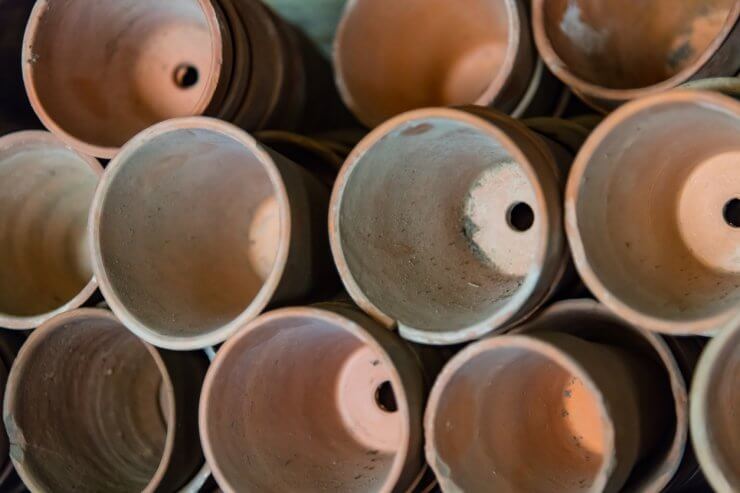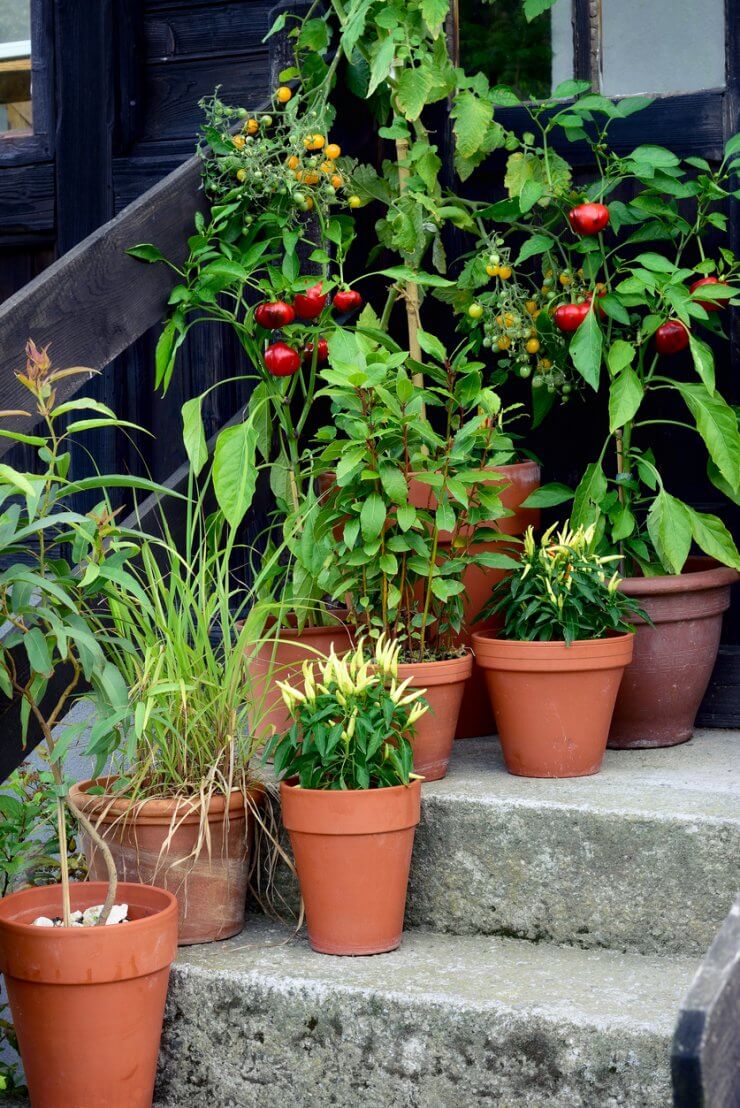
Plants don’t just absorb nutrients from their environment; they actually filter them out too! That’s why we’re able to grow plants using manure, for instance. If you’ve inherited old pots from previous owners, you may be wondering what was used inside them before they were yours. Plastic—which certainly has its own risks—can be washed down and even bleached without much worry, but terracotta is extremely porous, so if someone was previously growing flowers in them and not worrying about what kind of weed killer they were slathering on it, or if they’re covered in mold, you probably want to know how to clean terracotta pots sooner rather than later.

Using Terracotta Pots to Grow Vegetables
Terra Cotta means “baked earth” and these rust-colored clay pots are beloved by food gardeners, myself included, especially for drought-resistant plants that don’t like to stay wet after being watered.
Terracotta pots are a great choice for indoor gardening because they can withstand temperatures ranging from -40°F (-40°C) to 120°F (50°C), making them perfect for home-based growers who live in any climate. They also have the added benefit of being somewhat lightweight, which makes them easy to move around your house or garden. In addition, they come with built-in drainage holes that allow excess water to drain away naturally, which can prevent root rot in plants that seek good drainage.
But after a while, terracotta pots need to be cleaned because you’ll start to see the build-up of mineral salts from tap water and fertilizers, not to mention algae and other diseases. So here are a few good ways to get them clean with a little bit of elbow grease.
Discover 7 top tips for growing, harvesting, and enjoying tomatoes from your home garden—when you access the FREE guide The Best Way to Grow Tomatoes, right now!
How to Clean Terracotta Pots With Water and Dishsoap
If your issues are mostly cosmetic, you can easily clean terracotta pots with just water and chemical-free dish soap. This also ensures you’re not adding any new chemicals to the pot, or anything that might affect the pH of the soil later.
1. While wearing a mask, the first step in cleaning terracotta pots is to remove all plant debris, including leaves, stems, vines, and roots. You should also wash off any dirt or dust that might have accumulated over time. Discard all of it.
2. Next, soak the pot in a mix of dish soap and water, and use a stiff brush or steel wool to scrub the pot. You’ll need to work carefully as you do this.
3. Once you’ve cleaned the pot thoroughly, rinse it well under running water. To dry the pot, place it upside down on a rack or towel and let it air dry overnight. If you’re planting soon, you can even leave it in water until you plan to plant, because while a dry pot will siphon out the water from your plant, a wet one will leave it alone.
How to Clean Terracotta Pots with Vinegar
For algae, mildew, and beyond, you’ll want to use vinegar for cleaning. Here’s how.
1. While wearing a mask, remove plant debris, leaves, stems, roots, and vines. Rinse off excess dirt. Discard all of it.
2. Follow the steps above with water and dish soap, then in a large bucket, add a ratio of 1 part vinegar to 20 parts water.
3. Soak your terracotta pots for 30 minutes to an hour.
4. Use a stiff brush to scrub the pots, then rinse with water. Dry the pot by placing it upside down on a rack or towel. If you’re using vinegar then I’m assuming you have disease and want it dead, so instead of air drying you can put it in the oven at low heat for 30 minutes. Be sure to check the pot after every 10 minutes or so to make sure it doesn’t burn. Then let it cool in the oven before removing it so it doesn’t crack.
Why You Should Clean Terracotta Pots
- Algae leads to more algae which leads to more algae
- Mineral deposits from hard water can actually burn the roots of the plants inside.
- You can toss out old soil that might have old bug eggs in it, and will most certainly contain bacteria (a good reason to wear a mask).
If you were growing flowers I’d also tell you that to keep the terracotta pots looking new, you can apply a coat of clear sealer when they’re completely dry. This will help protect them against stains, scratches, and other damage. However, for food plants, I don’t apply any added chemicals.
Discover 7 top tips for growing, harvesting, and enjoying tomatoes from your home garden—when you access the FREE guide The Best Way to Grow Tomatoes, right now!
Have you used these tips on how to clean terracotta pots at home? What was your result? Share your other tips in the comments below.





Can I grow my African violet in a terracotta pot and water it from the bottom.
Absolutely – your African violet should do well in an unglazed terracotta pot. Water should be able to migrate through the terracotta, allowing your plant to receive moisture and optimal humidity.
White vinegar?
We recommend using white vinegar or cleaning vinegar since it has the highest acidity level
Can’t wait to grow some lettuce in a pot at my campsite.